Time to read: 5 min
Imagine a box in space that’s about the size of a long tissue box and capable of taking pictures of the Earth. That’s exactly what Planet Labs is doing: They’re using a 3U (a 10×10×34 cm CubeSat) called a Dove that takes pictures of the Earth to learn how daily imagery helps one move from seeing the past to understanding what’s happening today. CubeSats are taking over the space industry. The industry norm has been to use a single, multi-billion dollar, massive satellite in geostationary orbit with multiple purposes. However, this has been changing, and these single massive satellites are being replaced with constellations of smaller, cheaper, easier to replace satellites in low Earth orbit, called CubeSats.
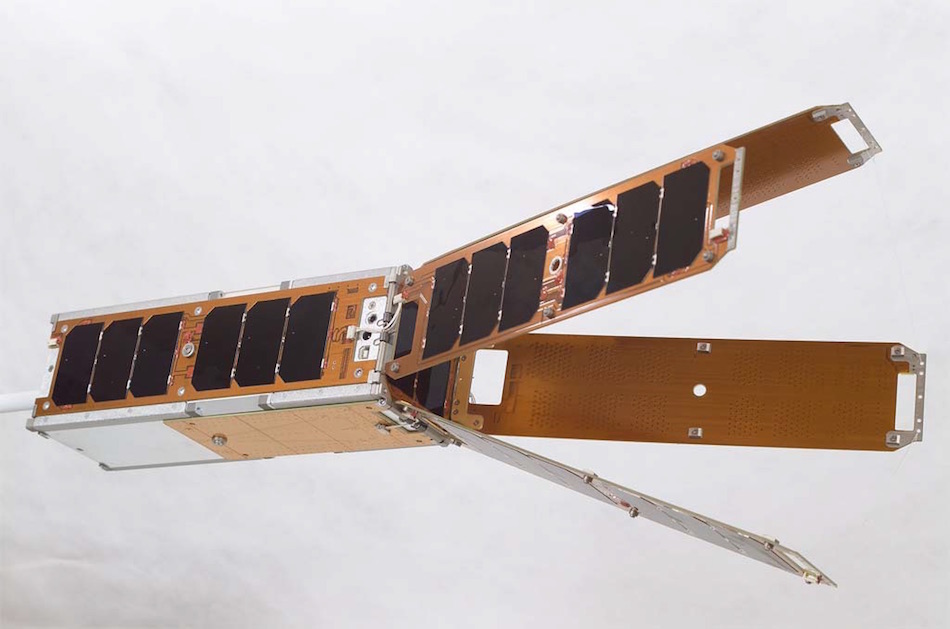
How CubeSats Work
A CubeSat is a type of miniaturized satellite for space research that is made up of multiple 10×10×11.35 cm cubic units, or a single U, which is the unit of measurement for CubeSats. CubeSats have a mass of no more than 1.33 kilograms per unit and often use commercial off-the-shelf (COTS) components for their electronics and structure. They float in low Earth orbit (LEO), which has an altitude between 160 km to 2,000 km, and orbit the Earth roughly every 90 minutes.
CubeSats are usually deployed via a Nanoracks CubeSat Deployer (NRCSD) or Poly Picosat Orbital Deployer (P-POD). NRCSD is a NASA ISS flight safety qualified, self-contained CubeSat deployer system that mechanically and electrically isolates CubeSats from the ISS, cargo resupply vehicles, and ISS crew. The NRCSD is capable of holding six CubeSat Units: 1U, 2U, 3U, 4U, 5U, and 6U (2×3 and 1×6) CubeSats. The P-Pod allows the CubeSat to separate from the launcher and is designed to carry three standard CubeSats. CubeSats have to be compatible with NRCSD or P-POD requirements, which include general, dimension, mass, electrical, and operational.
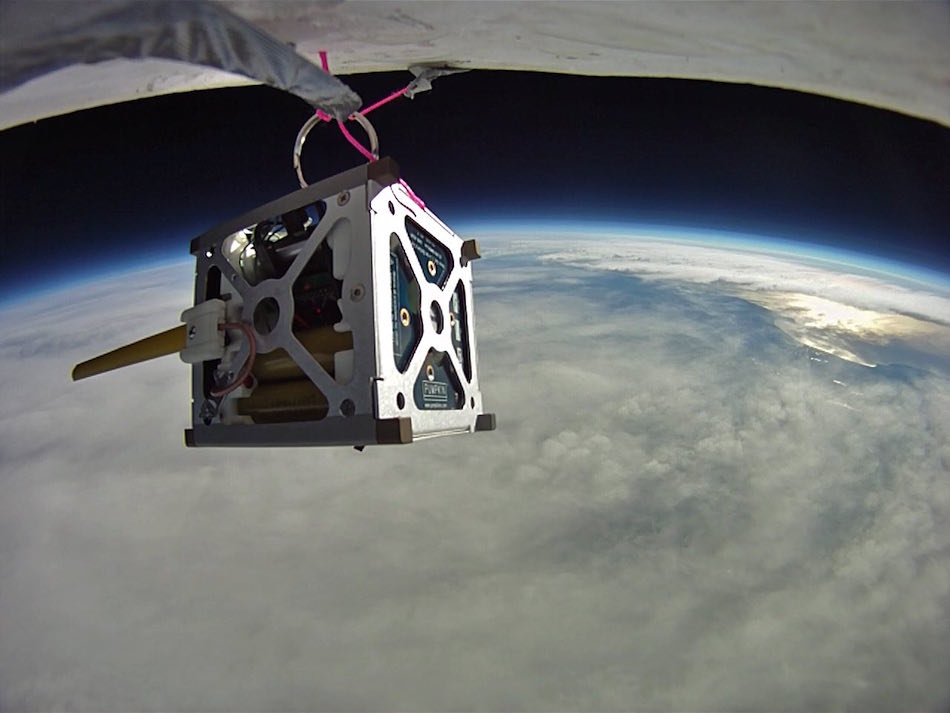
A Little Background on CubeSats
The CubeSat was invented in 1999 by a team of researchers at California Polytechnic State University and Stanford University. Professors Jordi Puig-Suari and Bob Twiggs wanted their students to design, build, test, and operate a low-cost, low-mass (for reduced launch costs) satellite in space, within a timeframe of a year or two. The first CubeSats were launched in June 2003, and there are now currently 461 CubeSat missions in space.
JPL has a collection of CubeSat Missions, some currently orbiting Earth, and others planned to launch later this year or next. There is also a CubeSat Database that provides a very rough working list of CubeSats that have flown or have firm manifests. A current CubeSat mission is QB50, which will demonstrate the possibility of launching a network of 50 CubeSats built by University Teams all over the world to perform first-class science in the largely unexplored lower thermosphere. Each CubeSat will accommodate a payload and will operate it for a few months. Payloads range from Ion-Neutral Mass Spectrometers (INMS) to Thermistors/thermocouples/RTD (TH).
A CubeSat contains many components that can be broken into six major subsystems: structure; communication; power; attitude determination and control; command and data handling; and the payload.
Structure
CubeSats range in size from 1 U to 3 U. They’re always 10×10 cm in length and width, but their height can vary from 11.35 to 34.05 cm. The allowable materials of the structure are aluminum alloys: 7075, 6061, 5005 and 5052, and they need to be anodized to prevent cold welding.
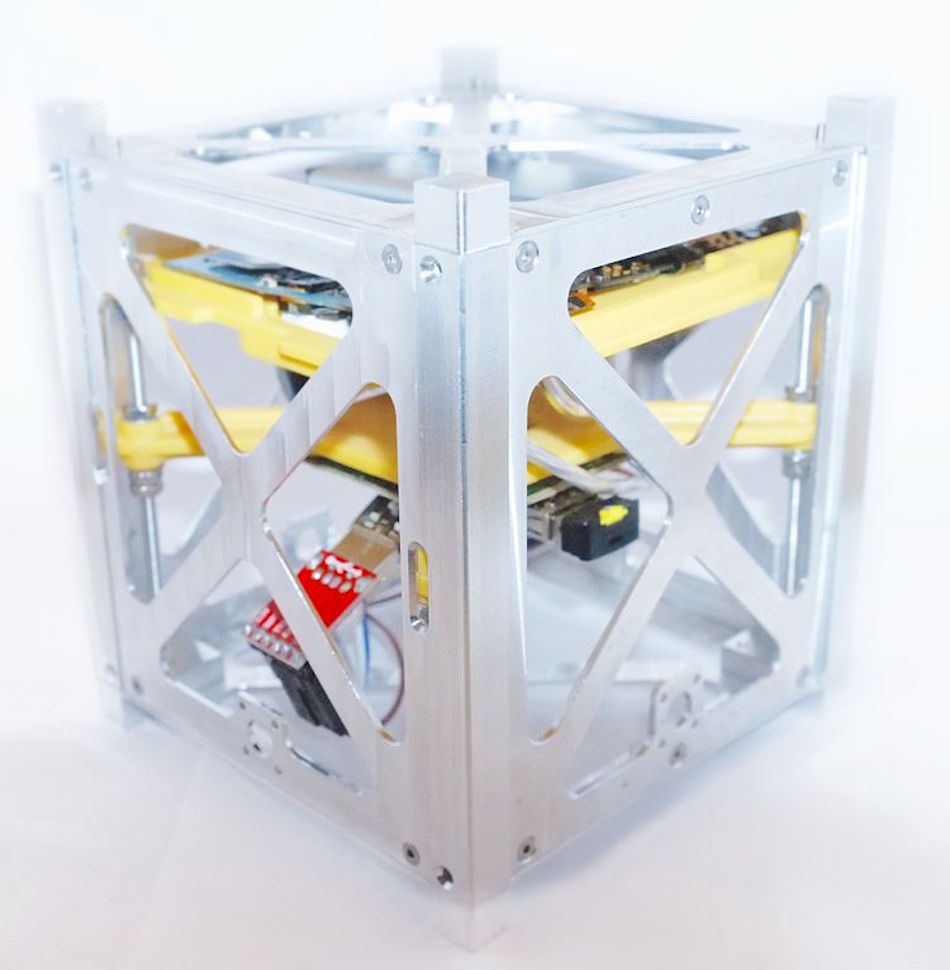
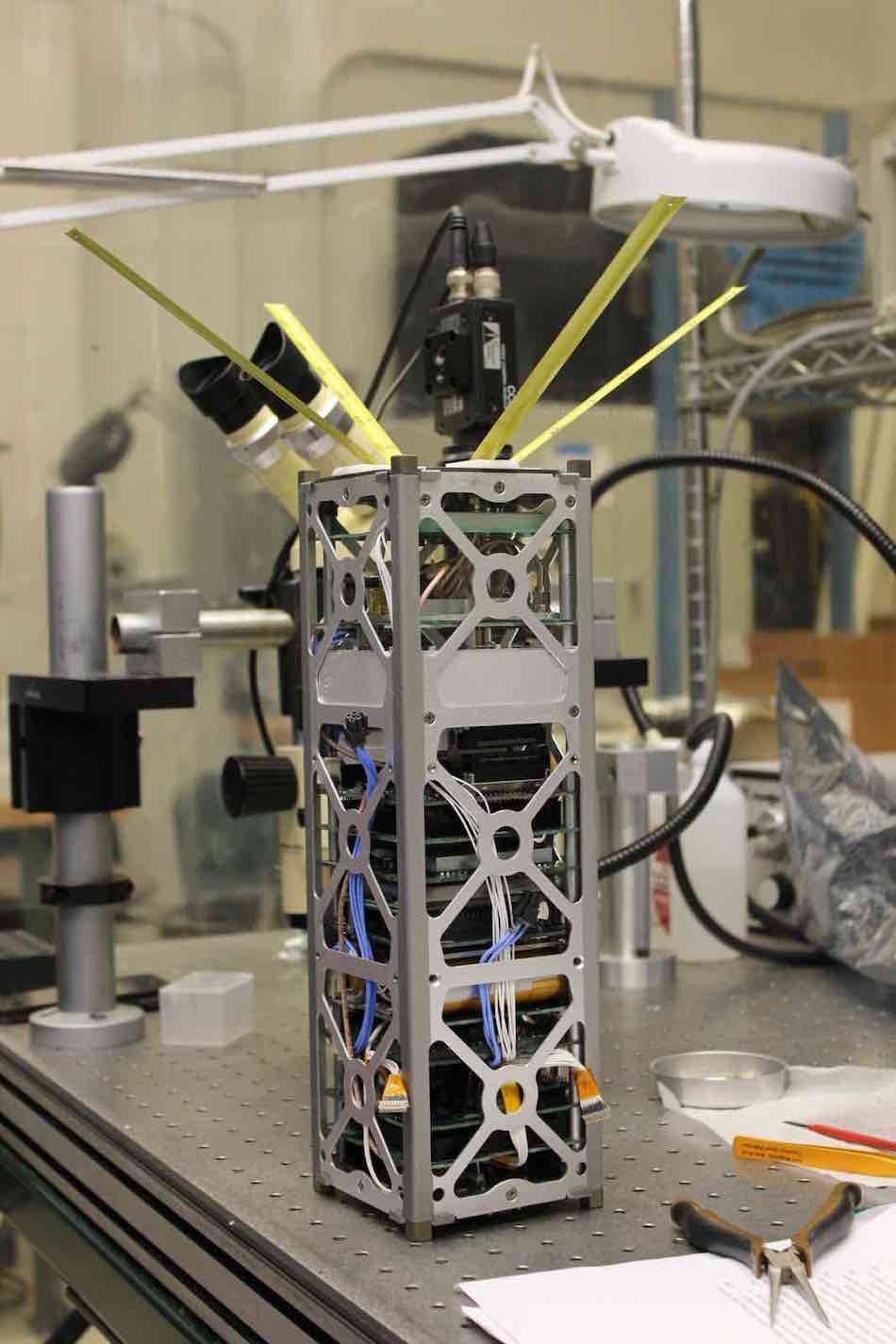
Communication
The communications system (COM) is severely limited by the amount of power available, which is usually around 2W. Compared to Boeing’s 702SP Spacecraft, which uses a Xenon Electrostatic ion thruster system (XIPS), operates in the low- to mid-power range of satellites, and has three to eight kilowatts of power, CubeSats’ power is exponentially less.
CubeSats use radio-communication systems in VHF, UHF, F-, S-, C- and X-band. The satellite uses an antenna, usually deployed once in orbit to help with communication. Antennas range from commercial measuring tape to more complicated inflatable dish antennas.
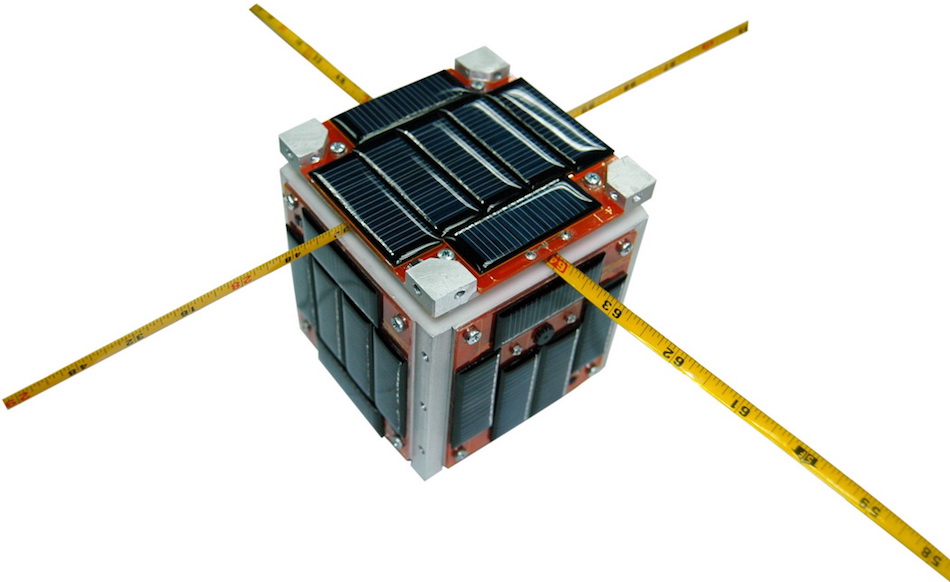
Power
The electrical power system (EPS) consists of solar panels and batteries. Solar panels hold solar cells that convert the solar light from the sun to electricity. Batteries take up a lot of mass and volume on the already tightly packed CubeSat. A major design challenge is placing the solar panels, either on the sides of the CubeSat itself, or having deploying solar panels. Having deployable panels adds solar cell area but also an extra mechanical complexity. For the panels to deploy, they need a burn wire release mechanism, and every mechanical system adds the possibility of a failure. If the panel does not deploy properly, the CubeSat will not have any power and even if everything else is functioning properly, the CubeSat will fail due to the lack of power.
Control
The attitude determination and control system (ADCS) controls the orientation of the CubeSat with respect to an inertial frame of reference and includes reaction wheels, magnetorquers, thrusters, star trackers, sun and Earth sensors, angular rate sensors and GPS receivers and antennas. This complex system is needed because when the satellite is first deployed, for example via NanoRacks from the International Space Station, it is tumbling. Some CubeSats can operate in this state, but others require pointing accuracy and location knowledge.
Computing
The command & data handling system (CDHS) includes their own computer that interfaces with the payload to do various tasks which might include image processing, data analysis, and data compression. Some CubeSats have even used smartphones as the CDHS, such as NASA’s PhoneSat.
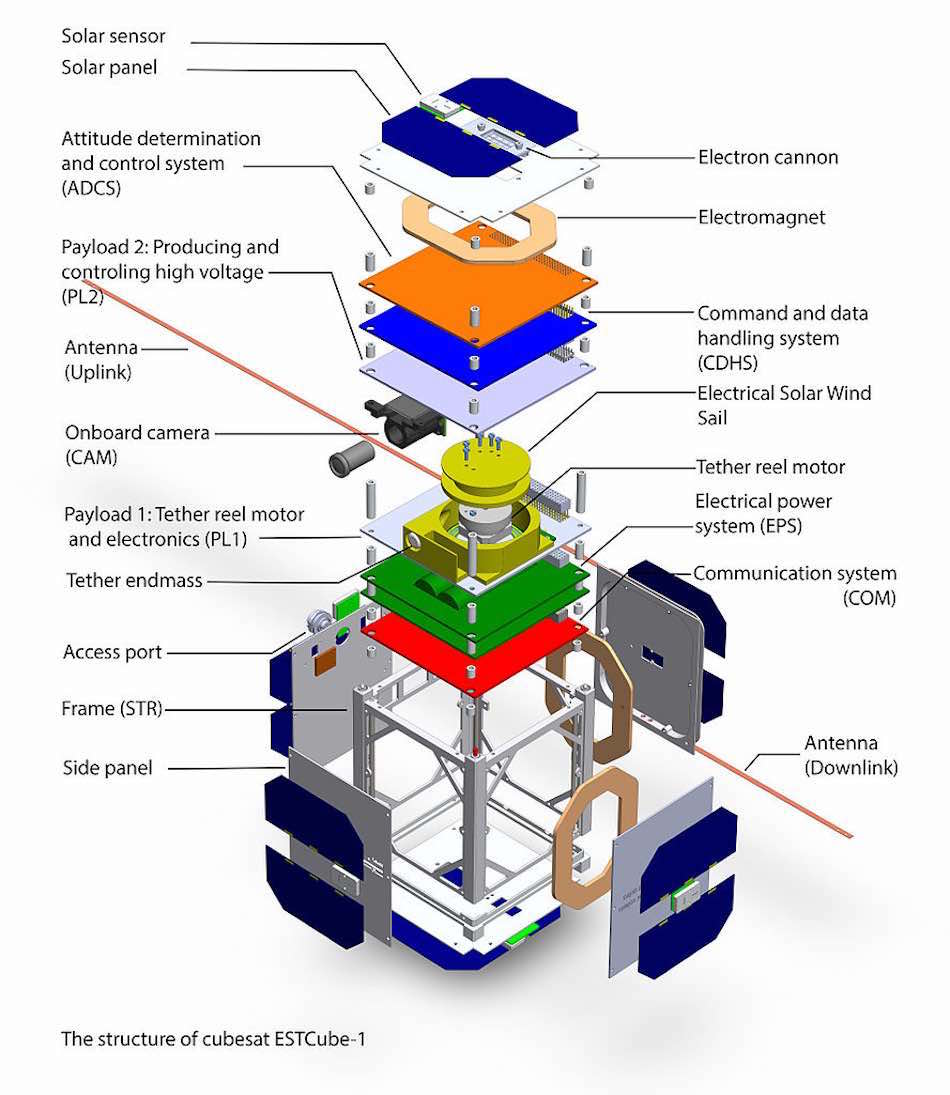
Payload
The payload, or the purpose of the CubeSat, dramatically varies, depending on the type of mission required. These can include cameras for pictures or video, like Planet Labs, or space qualification of certain electronic components, testing of a flight control system, or even some type of biological experiment.
Main Takeaways
CubeSats are no longer just an academic project—they’re taking over the space industry. Companies like Planet Labs, NASA, and Aerospace Corporation are developing, launching, and investing in this technology. In the immediate future, when people think of a satellite, they will no longer think of a massive, clunky object, but a small, holdable one. In the farther-out future, when people think of a satellite, they’ll think of the one they worked on and launched into space.










